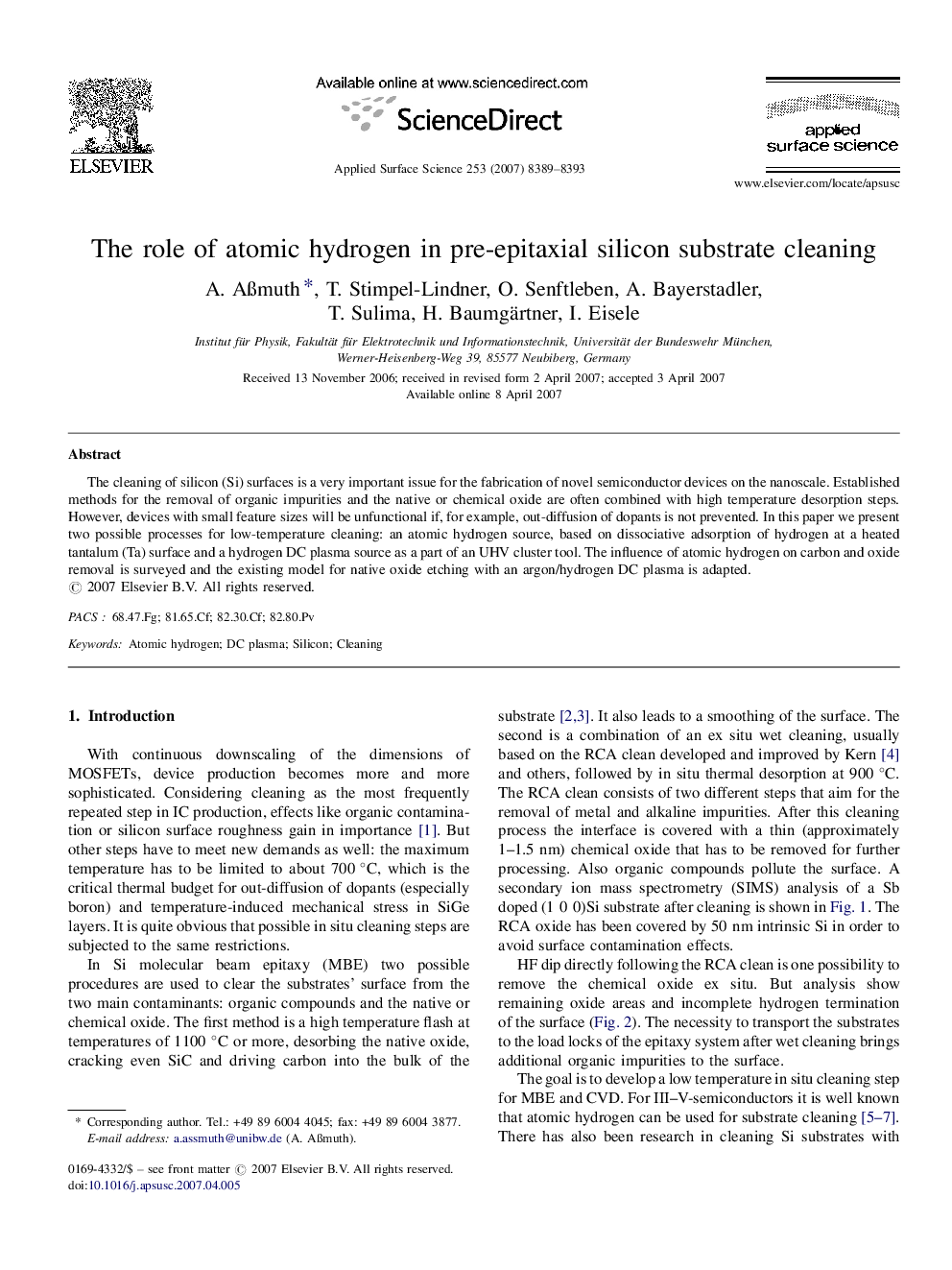| Article ID | Journal | Published Year | Pages | File Type |
|---|---|---|---|---|
| 5366739 | Applied Surface Science | 2007 | 5 Pages |
The cleaning of silicon (Si) surfaces is a very important issue for the fabrication of novel semiconductor devices on the nanoscale. Established methods for the removal of organic impurities and the native or chemical oxide are often combined with high temperature desorption steps. However, devices with small feature sizes will be unfunctional if, for example, out-diffusion of dopants is not prevented. In this paper we present two possible processes for low-temperature cleaning: an atomic hydrogen source, based on dissociative adsorption of hydrogen at a heated tantalum (Ta) surface and a hydrogen DC plasma source as a part of an UHV cluster tool. The influence of atomic hydrogen on carbon and oxide removal is surveyed and the existing model for native oxide etching with an argon/hydrogen DC plasma is adapted.
